2022 has been a great year for ladybirds at Gosforth Nature Reserve. Take a closer look at the species you could encounter in a new blog by NHSN Senior Naturalist, James Common.
Owing to a superb mix of habitats ranging from wetland and meadow to dense coniferous woodland, Gosforth Nature Reserve is home to a fantastic array of ladybirds. Historically somewhat under-recorded, this year, visitors and volunteers have shared more ladybird sightings from the reserve than ever before, helping us learn more about the species present here.
In total, 18 ladybird species have now been recorded at the reserve. Among these, some species such as the 7-Spot, 14-Spot and Harlequin Ladybirds are commonplace. These, alongside familiar species such as the 10-Spot Ladybird, and two inconspicuous ladybirds mentioned in past updates are not included here, but could be spotted on your next visit.
As well as familiar and abundant species, Gosforth Nature Reserve is also home to a range of more elusive ladybirds, and several specialists too. Many of which you’ve been recording throughout 2022. Below, we’ll take a closer look at some of these fascinating little insects.
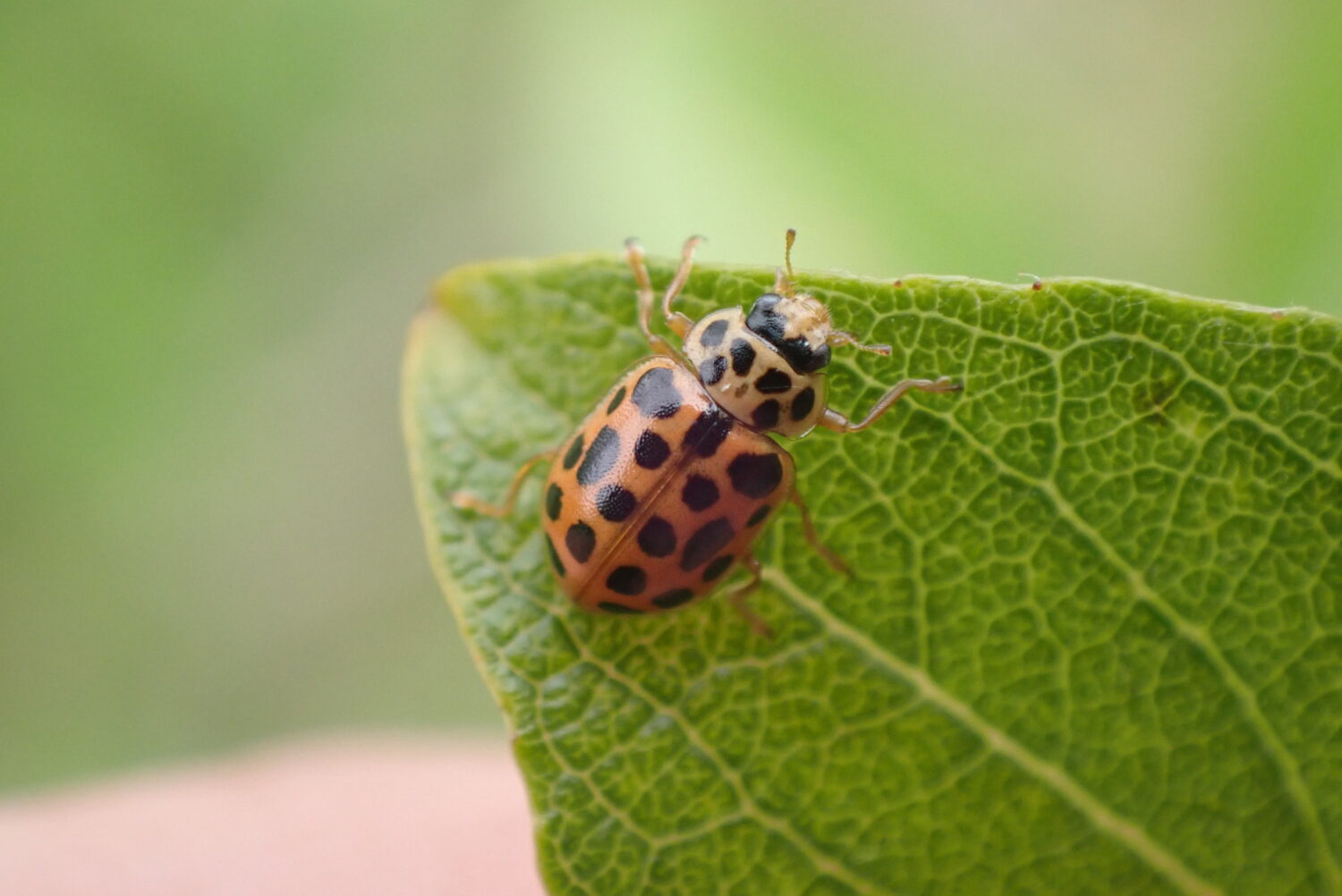
Water Ladybird
23 sightings
Unusually for a secretive and often well-hidden species, Water Ladybird is the most frequently recorded of Gosforth Nature Reserve’s scarcer ladybirds. A distinctive species, this specialist ladybird is beige in autumn and winter but turns a striking maroon in summer.
Found in winter by searching the dead stems of Bulrush and other aquatic plants, during the warmer months, it can be found by carefully studying waterside plants.
To date, Water Ladybirds have been recorded most often around the reserve’s smaller ponds but have been spotted in the reedbed too, especially around the dipping area.
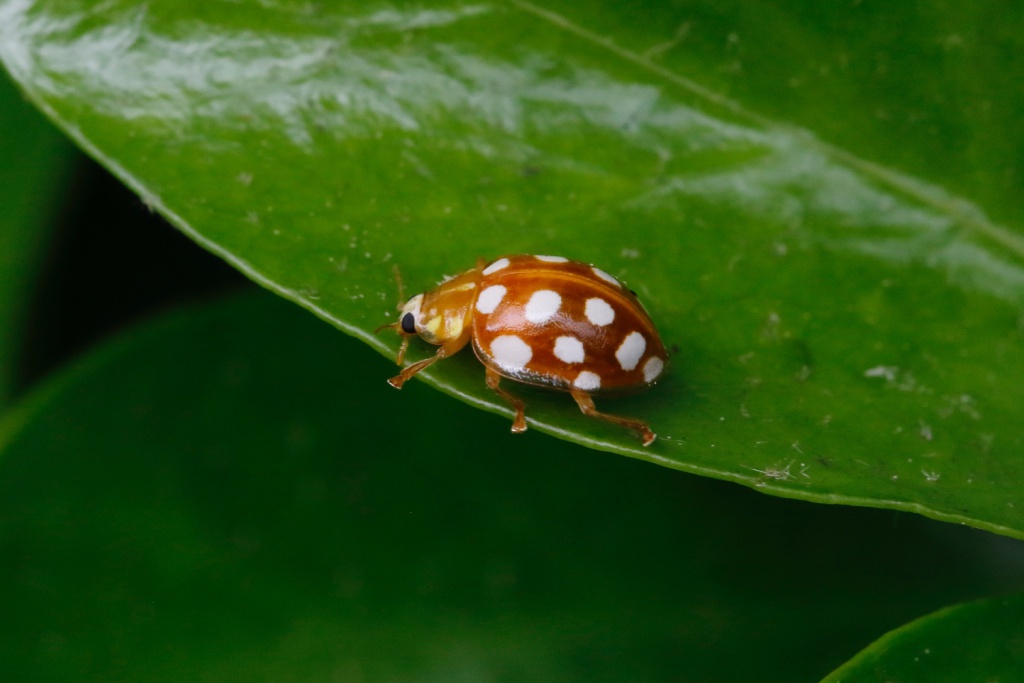
Orange Ladybird
11 sightings
An unmistakable bright orange ladybird with sixteen cream spots, the Orange Ladybird is a treetop specialist and is rarely seen at ground level. Feeding on mildew on trees such as Sycamore and Ash, it can sometimes be seen flying between trees, particularly on warmer days in summer.
Given their preference for the canopy, Orange Ladybirds are not frequently recorded at the reserve. Those spotted during summer are most often seen in flight or mistakenly landing on lucky volunteers.
In winter, they have been found sheltering in the tips of pine branches and within ivy growing on tree trunks.
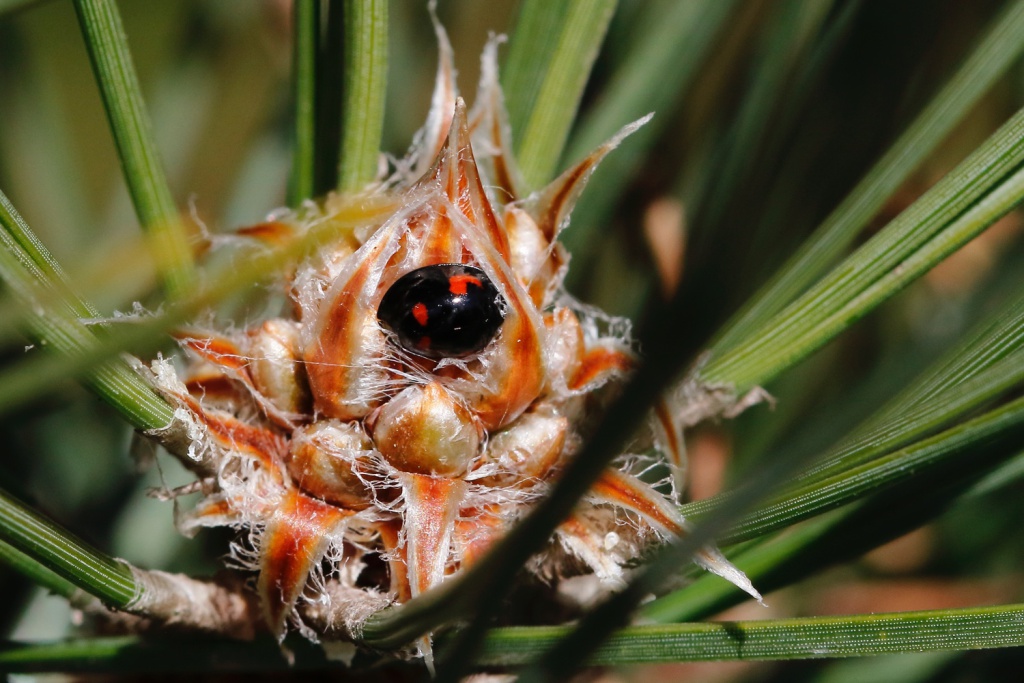
Pine Ladybird
9 sightings
Despite its name, the Pine Ladybird is not a conifer specialist. While it can be found on pine, it is also common in mixed and broadleaf woodland such as that found at the reserve. Despite this, there have only been nine sightings of this distinctive little ladybird to date.
A small, black species sporting two red comma-shaped markings on its wing cases, Pine Ladybirds be elusive but are best looked for by carefully searching the branches of conifers such as Scots Pine, or the trunks of broadleaf trees come in spring.
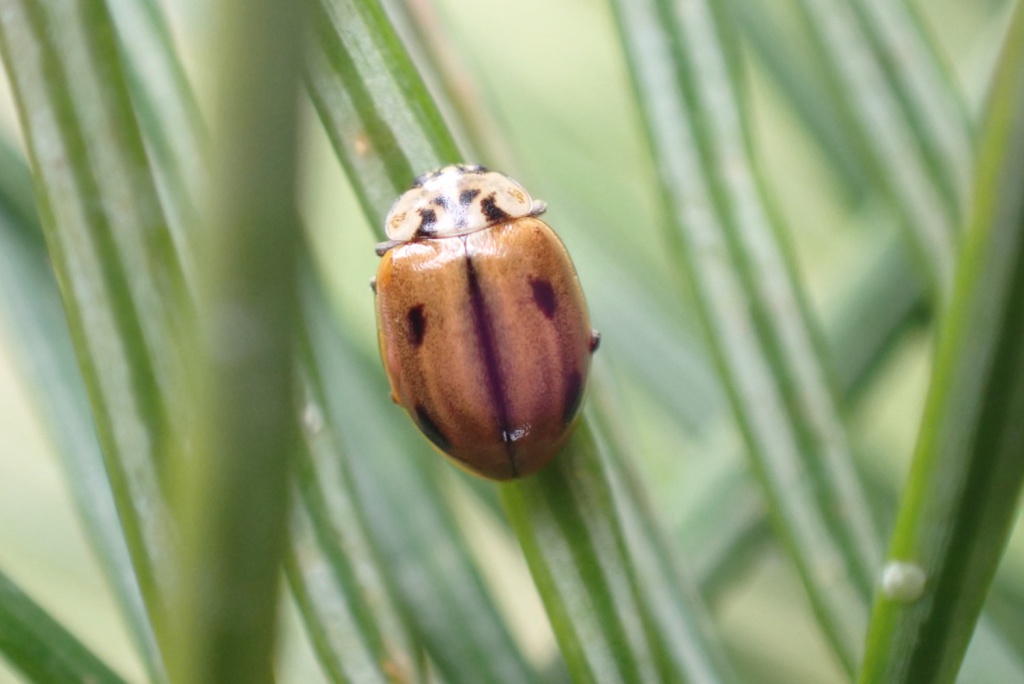
Larch Ladybird
5 sightings
Recorded for the first time at the reserve in 2022, Larch Ladybird could well be one of the most numerous species on site. While they have only been sighted five times, two more recent records have involved over fifty ladybirds!
An intricately marked, brown ladybird, despite its name, the Larch Ladybird is not a larch specialist. While it can be found on these trees, it is equally at home on pine and non-native spruce, both of which can be found at the reserve.
Like the Pine Ladybird, it is best looked for by carefully searching the branches of conifers where it will also hunker down to spend the winter.
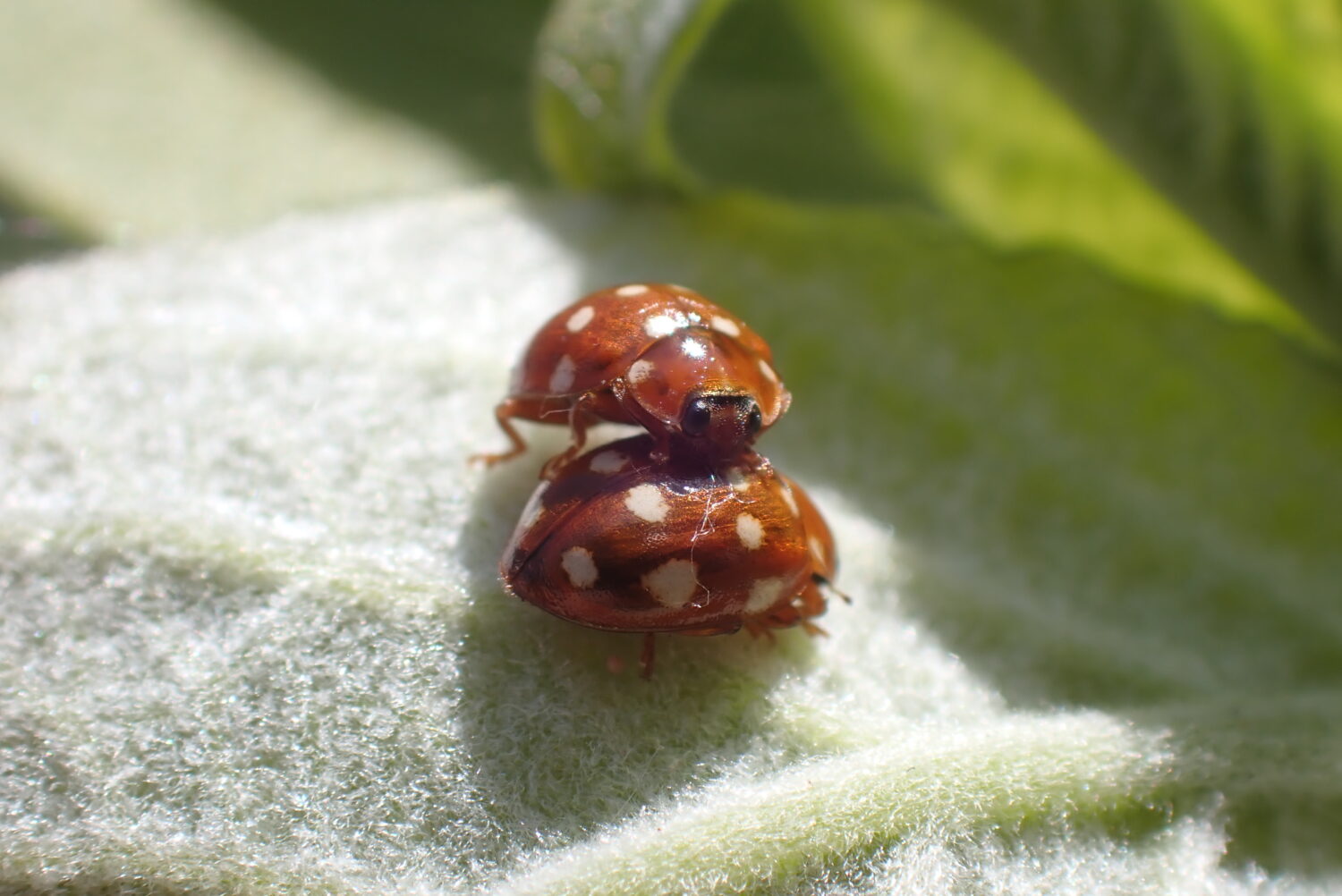
Cream-spot Ladybird
5 sightings
The Cream-spot Ladybird is a common, generalist species across the UK found around broadleaf trees and hedgerows. Distinctively coloured with maroon wing cases and fourteen creamy-white spots, it can be surprisingly hard to see thanks to its tendency to remain high in the trees.
Cream-spot Ladybirds are often encountered by chance while searching for other species and can be spotted on the leaves of tree species such as willow, or sheltering within ivy on tree trunks.
This species has also been found overwintering on Scots Pine at the reserve, though it usually chooses to spend the winter among leaf litter or within bark crevices.
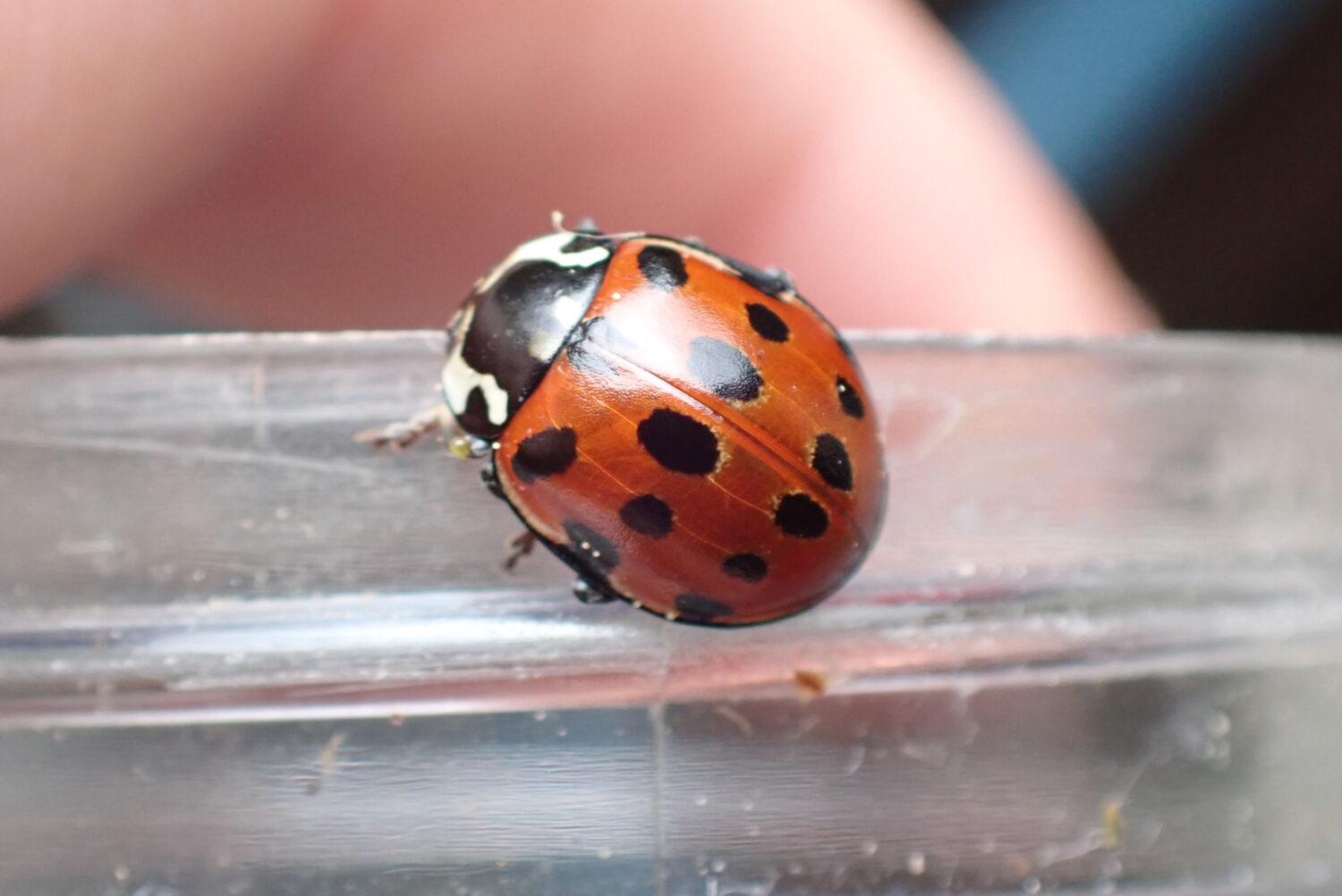
Eyed Ladybird
3 sightings
A conifer specialist recorded for the first time at the reserve in 2022 by naturalists, Philip Jordan and Jane Gray, the Eyed Ladybird is the UK’s largest ladybird species. A striking species sporting pale, eye-like rings around its black spots, this ladybird is rarely found away from conifers and shows a strong preference for our native Scots Pine.
Eyed Ladybirds can be found by visually searching the branches and bark of pines, or by tree-tapping, a common method used to survey ladybirds. At the reserve, the distinctive larvae of this species have also been recorded on young pines where they voraciously hunt the specialist aphids found on these trees.
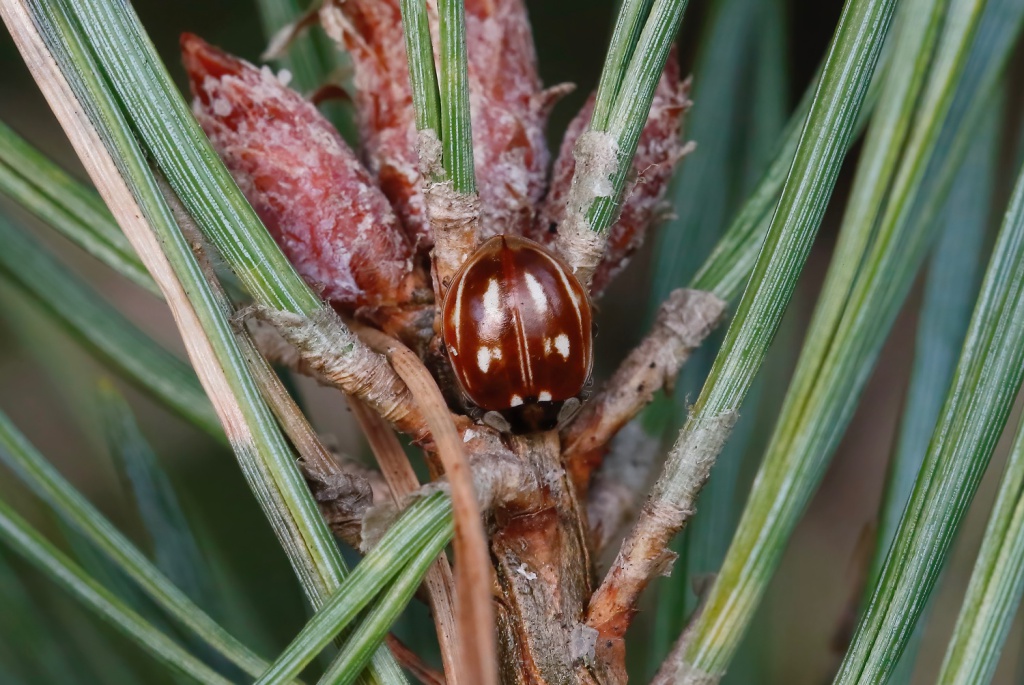
Striped Ladybird
2 sightings
A real rarity at the reserve or at least, very hard to see, the eye-catching Striped Ladybird spends much of its time high up in the tops of conifers. Strongly associated with mature Scots Pine, this ladybird is rarely encountered at ground level and instead, you’ll need to rely on a touch of luck to find it.
To date, sightings at the reserve have included a single ladybird blown from the treetops during heavy winds and another found overwintering within gorse – an odd choice of hiding place for a species said to overwinter under bark or within leaflitter.
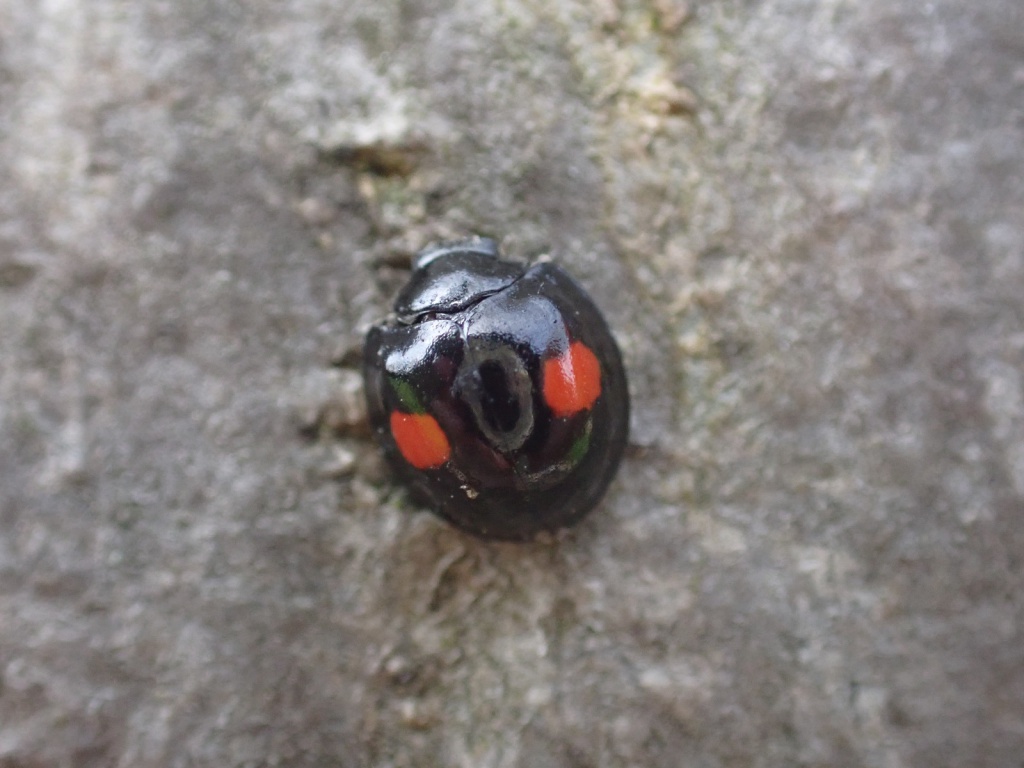
Kidney-spot Ladybird
1 sighting
Closely related to the Pine Ladybird, the Kidney-Spot Ladybird is another black and red species. Sporting two large, kidney-shaped markings on its wing cases, this species is unmistakable.
A woodland species strongly associated with Ash, this species is best encountered in spring when it gathers on the bark of trees to mate.
To date, Kidney-spot Ladybird has only been recorded once at the reserve but there must be more out there…
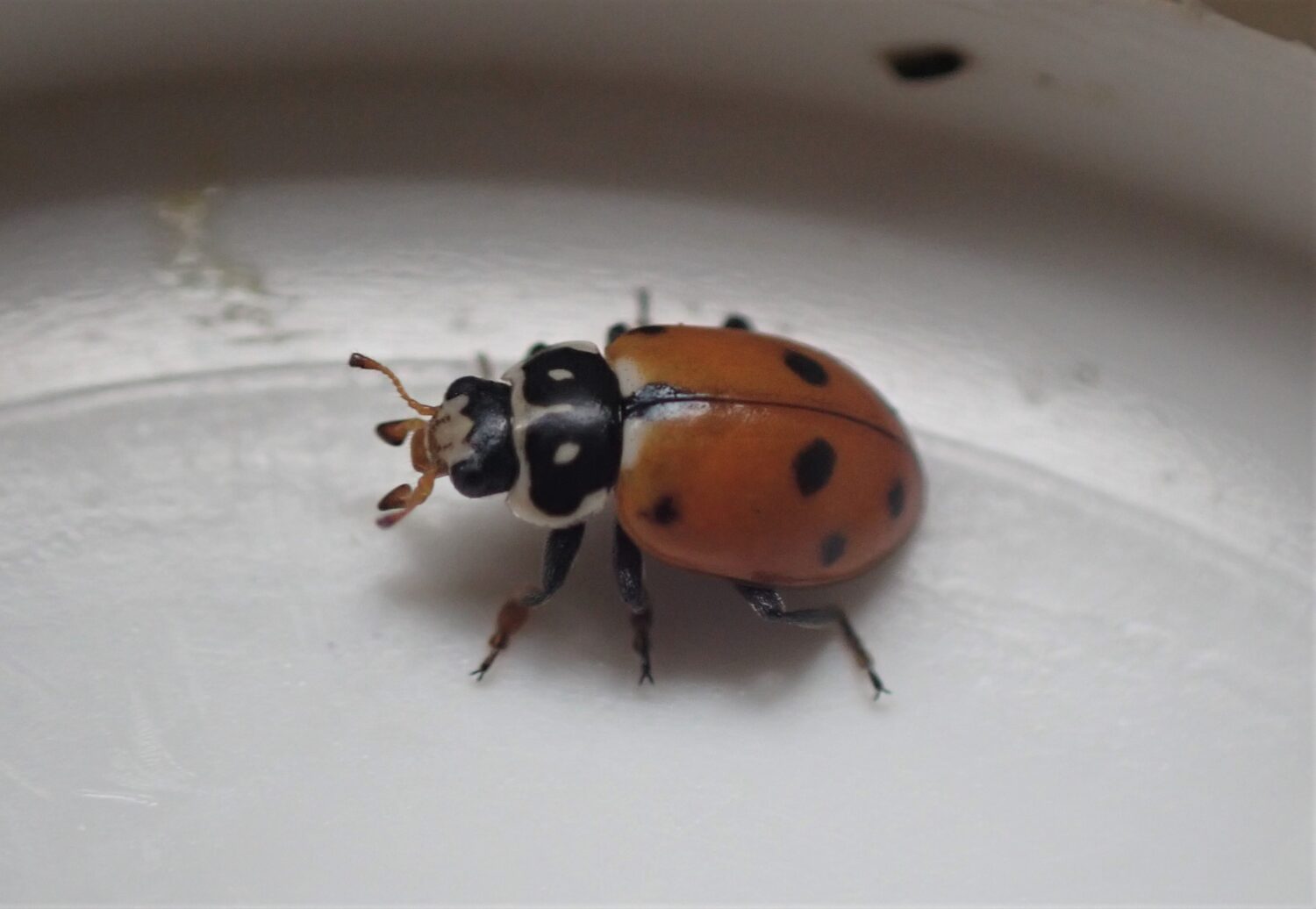
Adonis’ Ladybird
1 sighting
A rare species in the North East currently extending its range northward from its traditional heartlands in the south, this striking ladybird is associated with sandy, open soils and industrial land. Befitting this, the only record of this species at the reserve comes from the meadow area.
Somewhat resembling the commoner 7-Spot Ladybird, this species is smaller and sports a distinctive pattern of white on the pronotum. The spots on this species are also concentrated towards the rear of the wing cases and usually, it tends to appear more oval in shape.
Adonis’ Ladybird can be found by visually searching low-growing vegetation or by sweep netting.
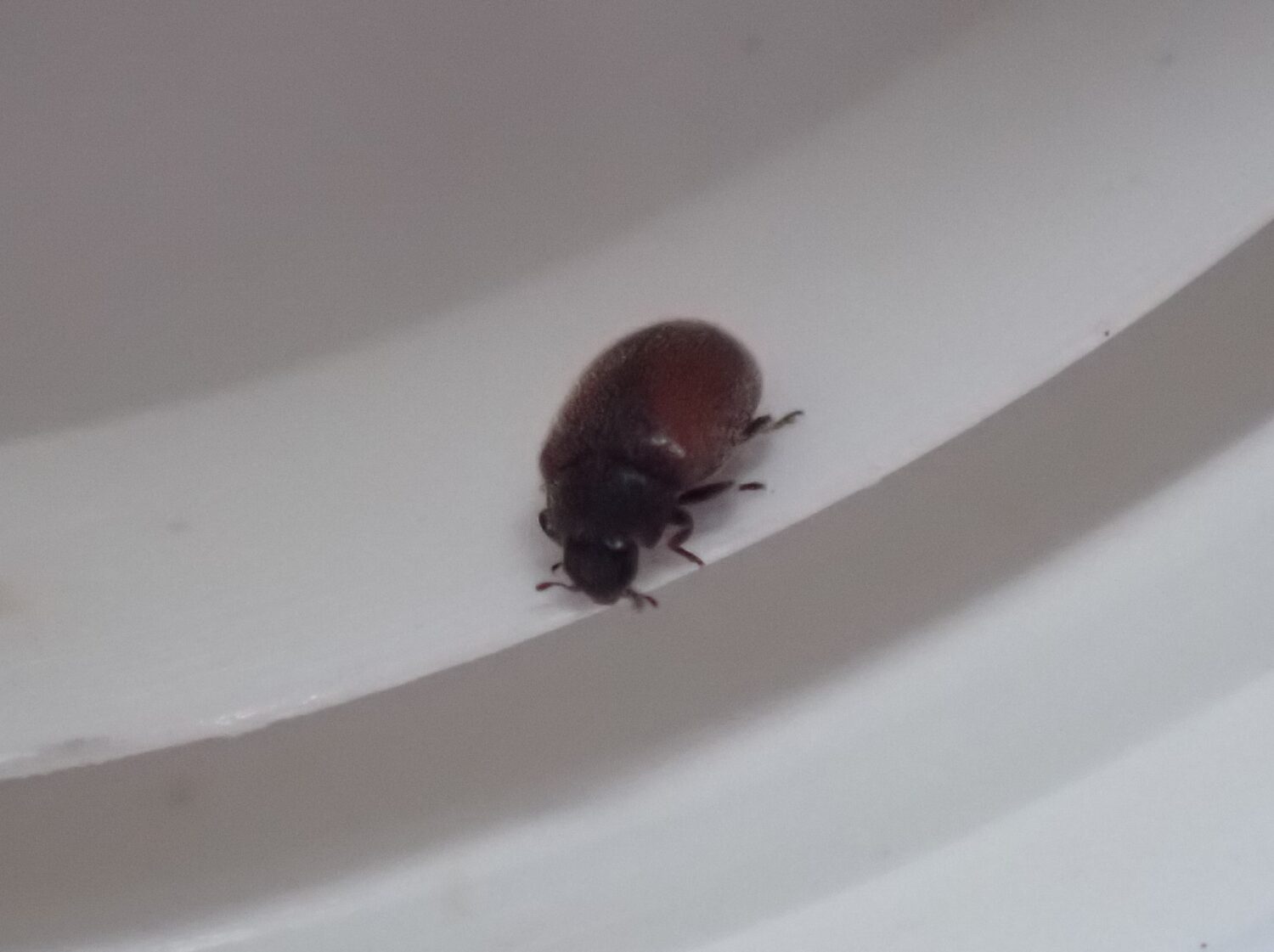
Pine Scymnus
1 sighting
The latest ladybird to be encountered at Gosforth Nature Reserve, the tiny Pine Scymnus is an inconspicuous species strong associated with Scots Pine.
Red-brown in colour and sporting a clear dark streak down the centre of the wing cases, it cannot be confused with any other ladybird found on conifers, though you may need a magnifying glass to see it!
Measuring in at only 2mm, this elusive species is best looked for by tapping the branches of pines.
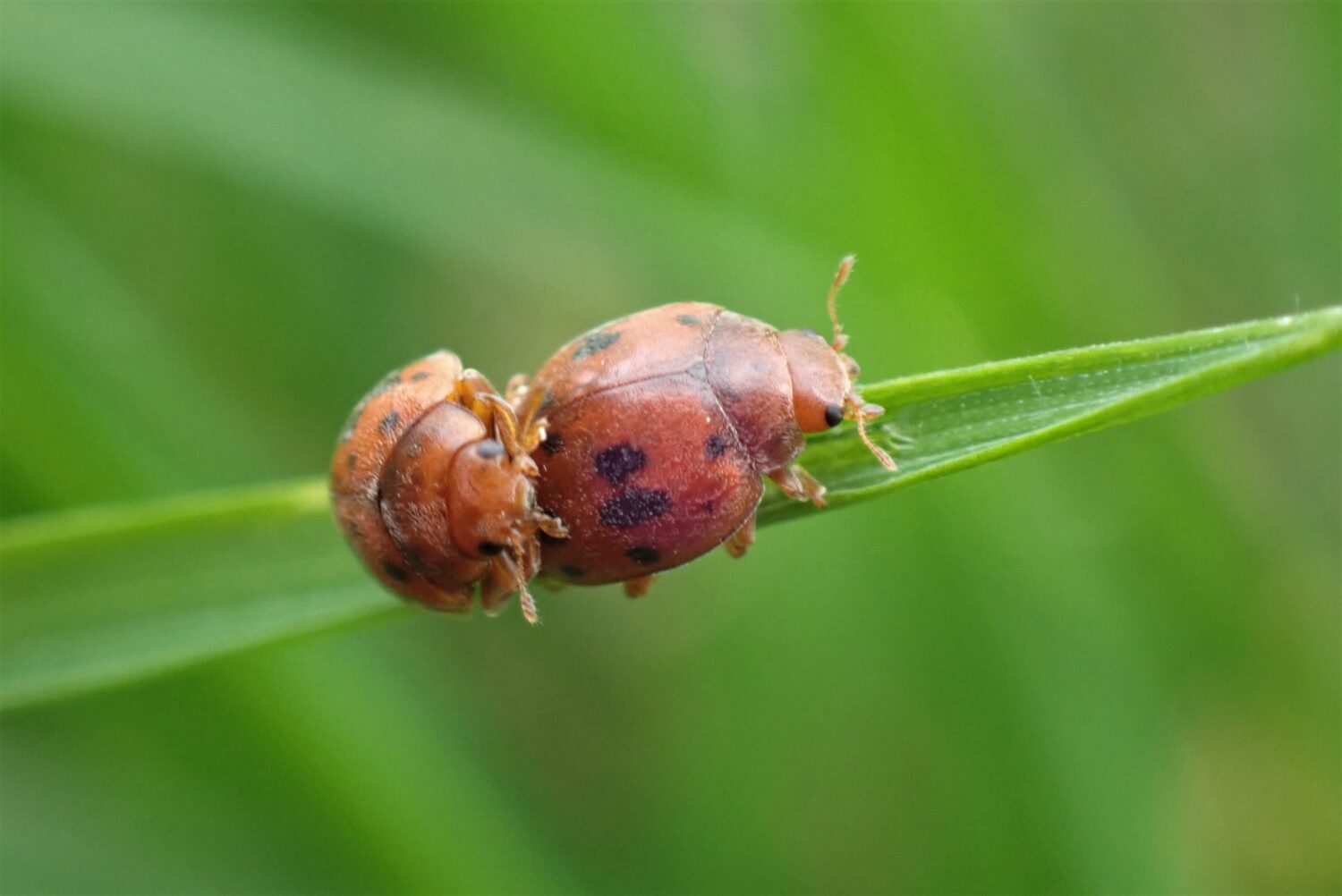
Join the North East Ladybird Spot
Ladybirds are some of the North East’s most beautiful invertebrates, but there are still important questions to answer about their distribution.
Join the North East Ladybird Spot from the Tees to the Tweed to increase knowledge and understanding of local ladybirds.
Taking part is easy and everyone can help: simply spot a ladybird, take a photo and share your sighting.